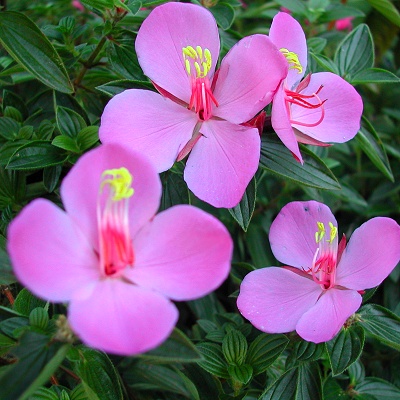Pink Princess Flower
Soil -- Monochaetum likes fertile, well-draining soil. A typical soil mix is 2 parts potting soil to 1 part perlite. An alternate mix is 1 part coco fiber to 1 part perlite or coarse horticultural sand. Don't add lime to the mix, but add some slow-release fertilizer if using the coco fiber mix. Transplanting -- Keep your plant in its pot in shade the first week, then move it to about a 4-5 inch container with drainage holes. If the soil is dry, water it before repotting to keep the soil ball from breaking apart, which can damage the roots. The first week after repotting, give no direct sun or liquid fertilizer. Then increase the lighting a little each week, watching for burning or wilting. Watering -- Aim to keep the soil evenly moist most of the time. The soil should not be allowed to dry out, but it shouldn't stay perpetually soggy either. If your tap water is very "hard" (high in minerals), it might be necessary to use bottled water or rain water. Climate -- Monochaetum grows in mountain cloud forests, where temperatures are mild year-round and nights are cool. I don't know whether it has any frost tolerance, or how much heat it can take. It's possible that might not thrive in temperatures consistently get above the low 80s (29°C), especially if nights are warm. It also might not have more than a couple of degrees of frost hardiness. I suggest keeping it over 40°F (4°C) the first winter. Over about 40% humidity is best. Light -- It prefers bright light with a few hours of direct sun per day. It might need some protection from strong afternoon sun. In warmer conditions, keep the pot shaded, perhaps by placing it inside a second pot made of clay. Fertilizing -- Monochaetum likes average amounts of fertilizer. Feed about every 2-3 months with a granular fertilizer, following the dosage on the package. Pests to watch for -- Watch for any pests than can affect your other plants.. perhaps scale, aphids, spider mites, and mealybugs. If you have any questions, feel free to email me. Enjoy your plant! - Jeff Strange Wonderful Things
|
|||||||||


